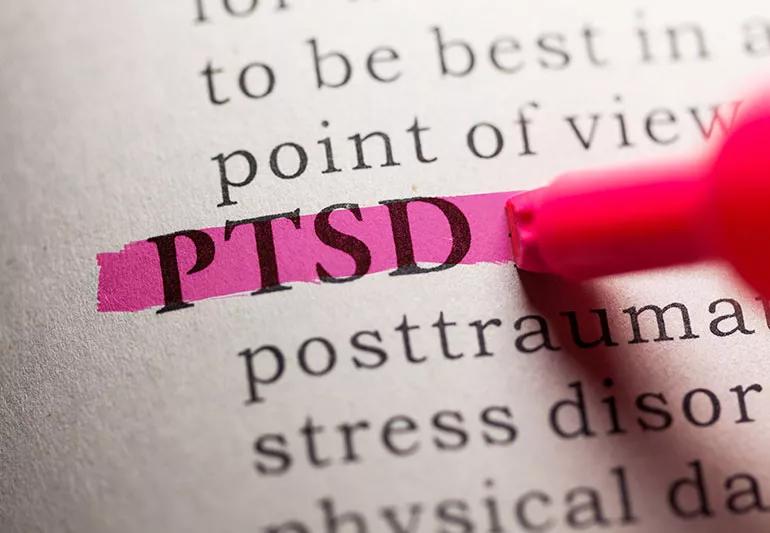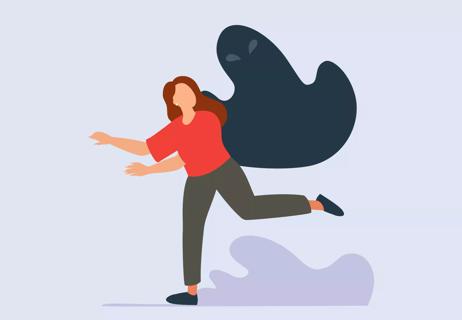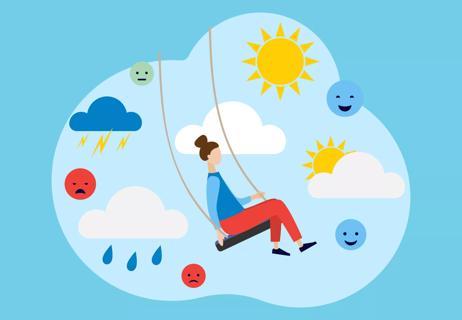How to take steps toward healing

If you have post-traumatic stress disorder (PTSD), you know how much it can mess with your day-to-day life. But help is available. You can take steps to live well even with this challenging disorder.
Advertisement
Cleveland Clinic is a non-profit academic medical center. Advertising on our site helps support our mission. We do not endorse non-Cleveland Clinic products or services. Policy
Maybe you experience nightmares or flashbacks. The anxiety they bring can show up without warning, like the worst kind of surprise houseguest. And you might find yourself sucked into quicksand-like swamps of anger or guilt.
The good news: All of those symptoms are normal. You might be thinking, “That’s supposed to be good news?” But understanding where your symptoms are coming from is the first step toward healing. “And you can heal and recover from PTSD – it will just take some time,” says psychiatrist Molly Wimbiscus, MD.
First, the basics. PTSD is a type of anxiety disorder. It occurs in people who’ve experienced or witnessed a traumatic event.
Sometimes, that event is big and obvious: combat, a life-threatening accident or sexual assault. Other times, it develops after a series of smaller, less obvious, stressful events — like repeated bullying or an unstable childhood.
Chronic PTSD can result from multiple adverse childhood experiences, or ACEs, which can include unstable adult relationships, food insecurity, childhood abuse, effects of trauma, recurrent micro-aggressions and more.
These recurrent childhood stressors can impact brain and overall development leading into adulthood. When a child is exposed to stressors early in life, unhealthy patterns often develop and brain function may change due to internalization of trauma.
Advertisement
“Professional treatment can help you feel better,” says Dr. Wimbiscus. And while medications can play a role in treating the disorder, she says the gold-standard treatment is trauma-focused cognitive-behavioral therapy, or TF-CBT, and sometimes another variation of this type of therapy called EMDR (eye movement and desensitization reprocessing).
This type of therapy helps you reframe your memories of the trauma and learn new ways to manage those thoughts and feelings. “A big part of managing PTSD is having a skilled mental health professional working alongside you,” Dr. Wimbiscus says.
Here’s the ugly truth: That treatment isn’t easy — it might dig up memories or emotions you’d rather keep buried. And for all that effort, you may not feel like you’re making much progress. And you might have to meet with your therapist a few times before you can get into the real work of treating PTSD.
Having patience for that process is easier said than done. But your hard work will be worth it when you come out on the other side, with fewer symptoms and better tools to manage your anxiety.
Some people with PTSD will notice their symptoms fade in a matter of months. For others, healing takes longer. You may feel frustrated that you can’t speed up the process.
While you’re being treated for PTSD, you can do several things to make getting through each day a bit easier:
Advertisement
One more thing you should definitely do if you have PTSD: Be kind to yourself. That advice probably makes you roll your eyes — but sometimes, cheesy advice rings true. PTSD can cause feelings of guilt, shame and anger. When you’re feeling down, it can help to remember that it’s not you. It’s the disorder.
“PTSD changes the structure of your brain,” Dr. Wimbiscus points out. Think about that: Your brain is physically different than it used to be. PTSD is not caused by weakness, and you can’t just make yourself get over it.
So what should you do when you’re feeling hopeless? Remember that hopelessness, too, can be a symptom of the disorder.
And try to follow Dr. Wimbiscus’ advice: “Focus on getting through your daily tasks, and know that it gets better. Allow time to do its work. It may be a struggle right now, but time is one of our greatest healers. There is hope.”
Advertisement
Learn more about our editorial process.
Advertisement

Fishing for compliments, provoking conflict and pouring on the melodrama are all ways of expressing an unmet need

By setting boundaries around how much you give, you can save your time and resources while also being a good person

Certain B vitamins, omega-3 fatty acids and a healthy diet can serve as complementary treatments for schizophrenia

Following your treatment plan, finding a community, staying active and maintaining a healthy diet can help manage this psychiatric condition

Whether it’s playing hooky or faking cancer, malingering behavior is always motivated by personal gain

Causes range from psychological conditions like PTSD to physical conditions like fibromyalgia

Always putting others’ happiness before your own can build resentment over time

Emotional changes, isolation and unusual behavior could signal the onset of the condition

Babies can get congested easily, but you can calm their cough by keeping them hydrated, using nasal drops and running a humidifier

Weight loss may cause loose, sagging skin and muscle loss to your rear

Several conditions, like vitiligo and fungal infection, can cause a loss of pigmentation, leading to white spots or patches on your skin